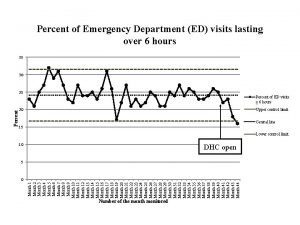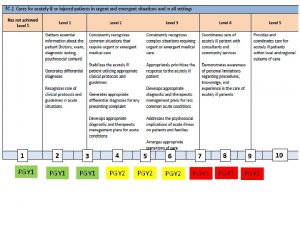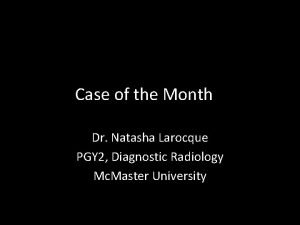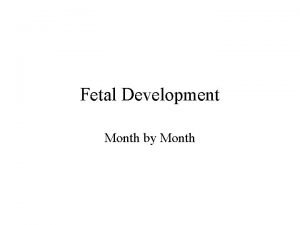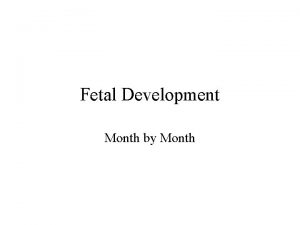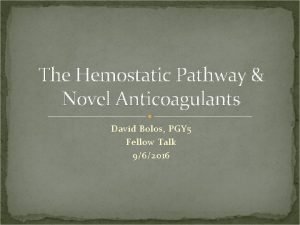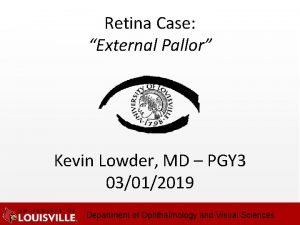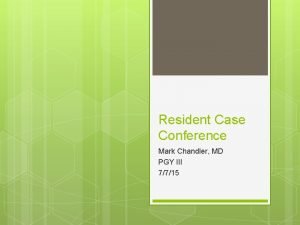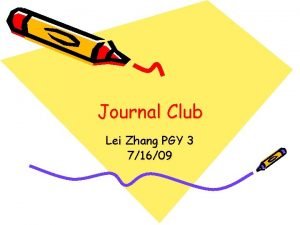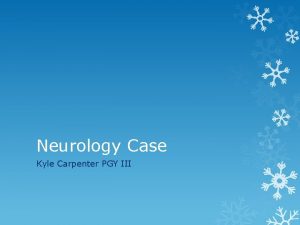Case of the Month David Li PGY 2














- Slides: 14

Case of the Month David Li PGY 2

Initial presentation • 23 -year-old male, previously healthy • Headache, nausea/vomiting over the past few weeks • No medications, no drug use, no relevant family history

CT head

Post-contrast images

Findings • Large mass in the right temporal lobe, predominantly hypoattenuating with a lobulated iso/hyperdense component at its inferior aspect • No intralesional calcifications are present • Mild degree of perilesional vasogenic edema • Moderate heterogeneous enhancement • Significant positive mass effect • MRI was subsequently obtained for further characterization

Axial T 2

Axial T 1 post-gad

DWI

Findings • Essentially confirms the findings on CT – Solid and cystic components, with the solid component demonstrating heterogeneous signal intensity on T 1 and T 2 -weighted images – Heterogeneous enhancement of the solid component

Differential diagnosis • In summary, we have a young patient with a mixed solid/cystic lesion in the temporal lobe • Ddx: – Pleomorphic xanthoastrocytoma (PXA): temporal lobe is a classic location, typical ddx for lesions that are ‘cystic with an enhancing mural nodule’. Usually involves the overlying leptomeninges – Ganglioma: also typically temporal lobe. Positive, but less prominent, contrast enhancement – Dysembryoplastic neuroepithelial tumor (DNET): also typically temporal lobe. ‘Bubbly’ appearance on T 2 WI, and no diffusion restriction – Ganglioneuroma: many also occur outside the brain

Histopathology

Findings • Hypercellular tumor with mixed fibrillary astrocytes and immature ganglion cells • Fibrillary astrocytes show strong staining for GFAP • Findings in keeping with a low grade glioneuromal tumor, specifically ganglioma

Ganglioma • Typical occurrence in the temporal lobe, presenting in children and young adults, commonly presenting as temporal lobe epilepsy • Imaging features range from mixed cystic/solid to predominantly solid, with variable enhancement patterns • Frequently calcified • Solid component is T 2 bright, cystic component is variable; peritumoral edema is minimal/uncommon • Consists of both ganglion cells and glial elements

Ganglioma • Important to list the other important differential diagnoses for a cystic temporal lobe lesion in a young patient, as clinical presentations and imaging appearances overlap a great deal
 Hebrew month of abib
Hebrew month of abib Sidereal month vs synodic month
Sidereal month vs synodic month Best worst and average case
Best worst and average case Hát kết hợp bộ gõ cơ thể
Hát kết hợp bộ gõ cơ thể Frameset trong html5
Frameset trong html5 Bổ thể
Bổ thể Tỉ lệ cơ thể trẻ em
Tỉ lệ cơ thể trẻ em Chó sói
Chó sói Thang điểm glasgow
Thang điểm glasgow Bài hát chúa yêu trần thế alleluia
Bài hát chúa yêu trần thế alleluia Các môn thể thao bắt đầu bằng tiếng nhảy
Các môn thể thao bắt đầu bằng tiếng nhảy Thế nào là hệ số cao nhất
Thế nào là hệ số cao nhất Các châu lục và đại dương trên thế giới
Các châu lục và đại dương trên thế giới Công thức tính độ biến thiên đông lượng
Công thức tính độ biến thiên đông lượng Trời xanh đây là của chúng ta thể thơ
Trời xanh đây là của chúng ta thể thơ















